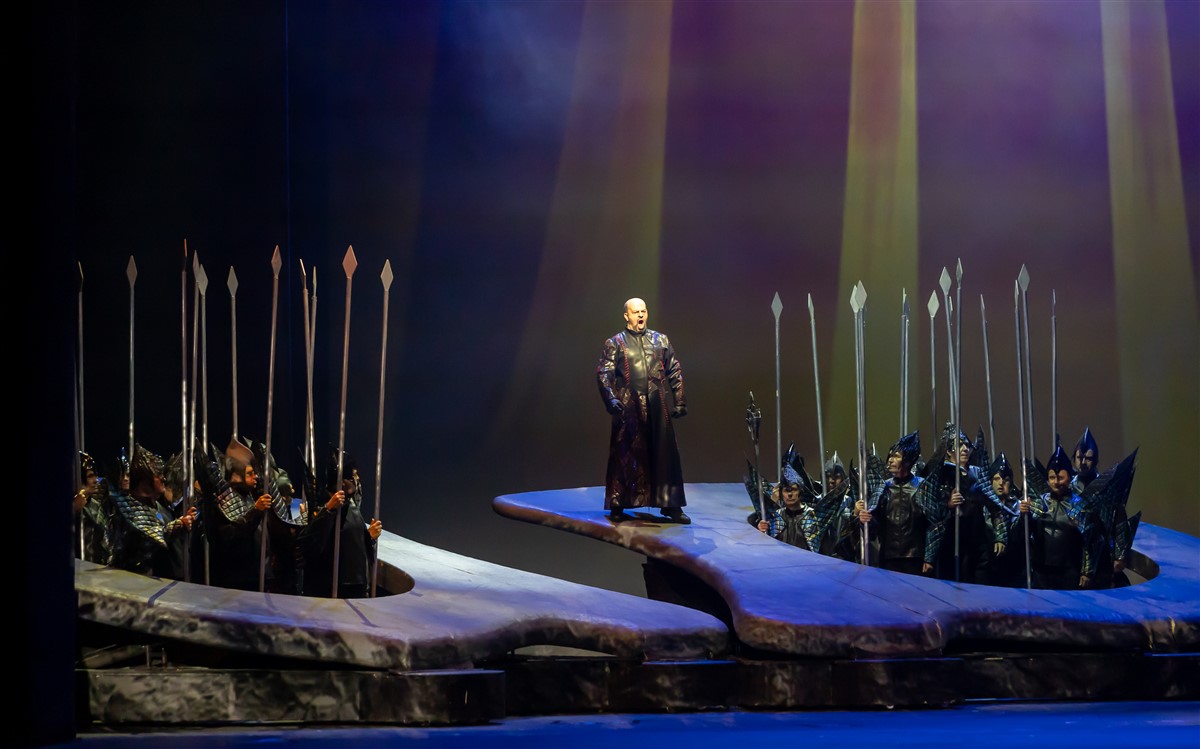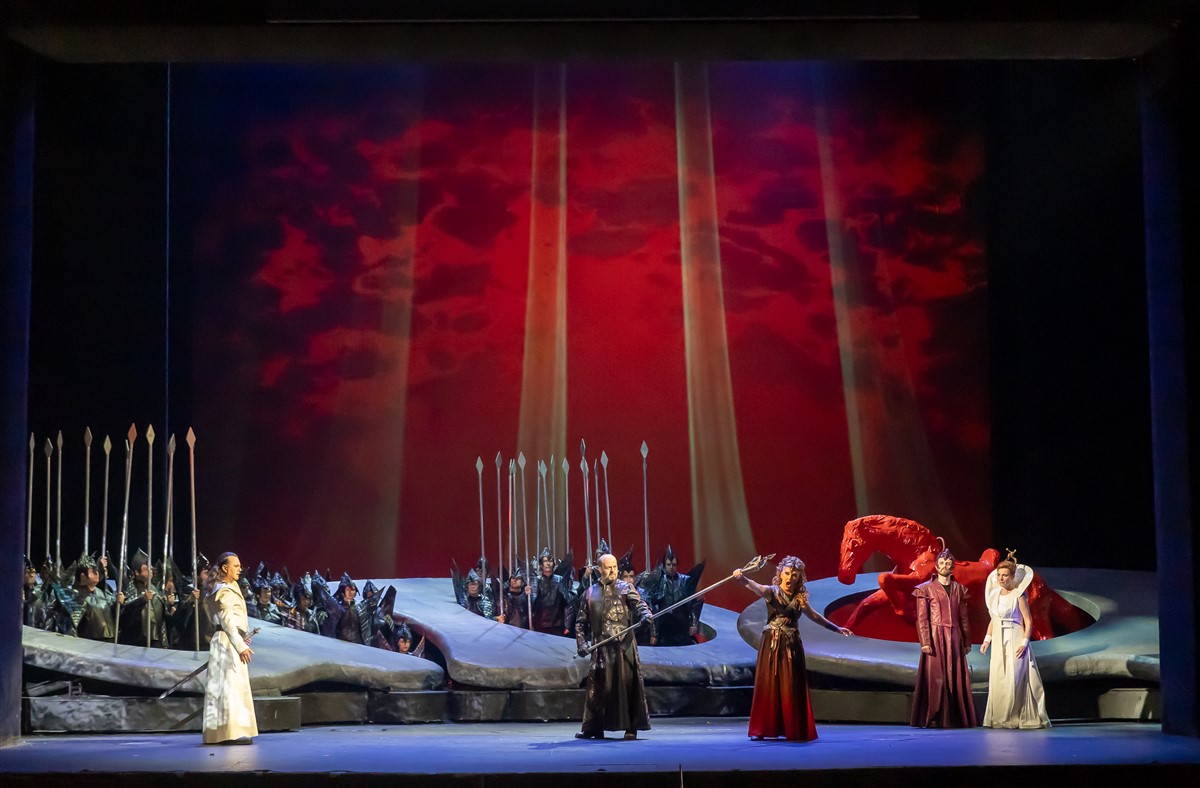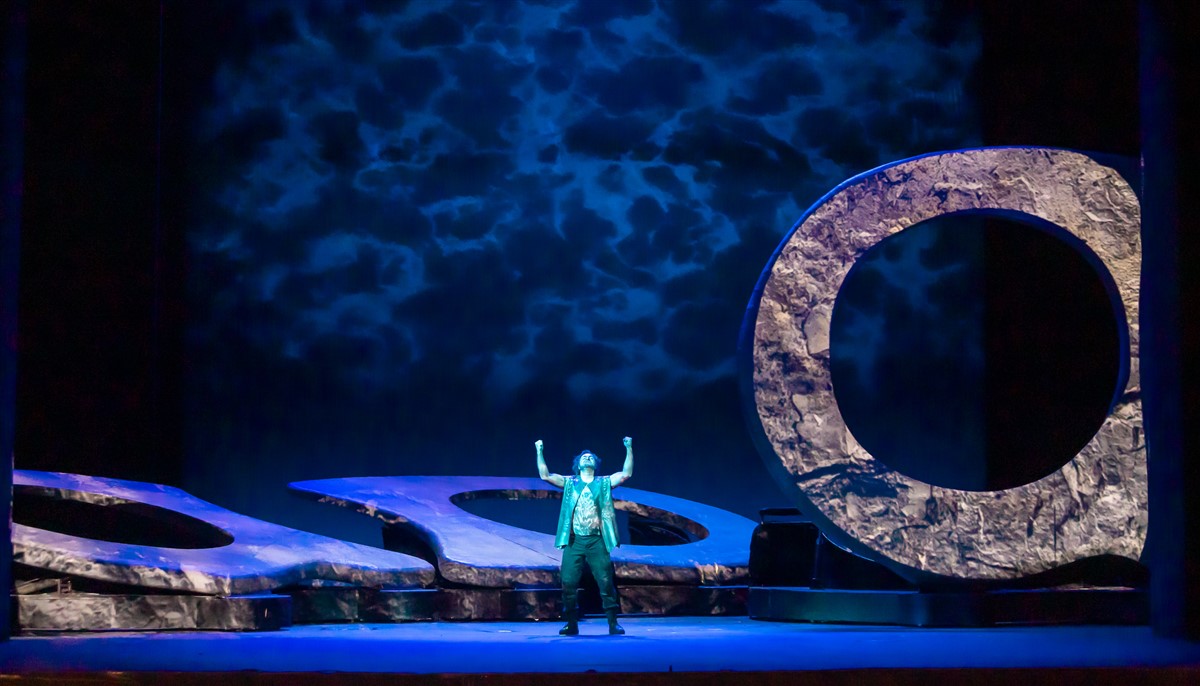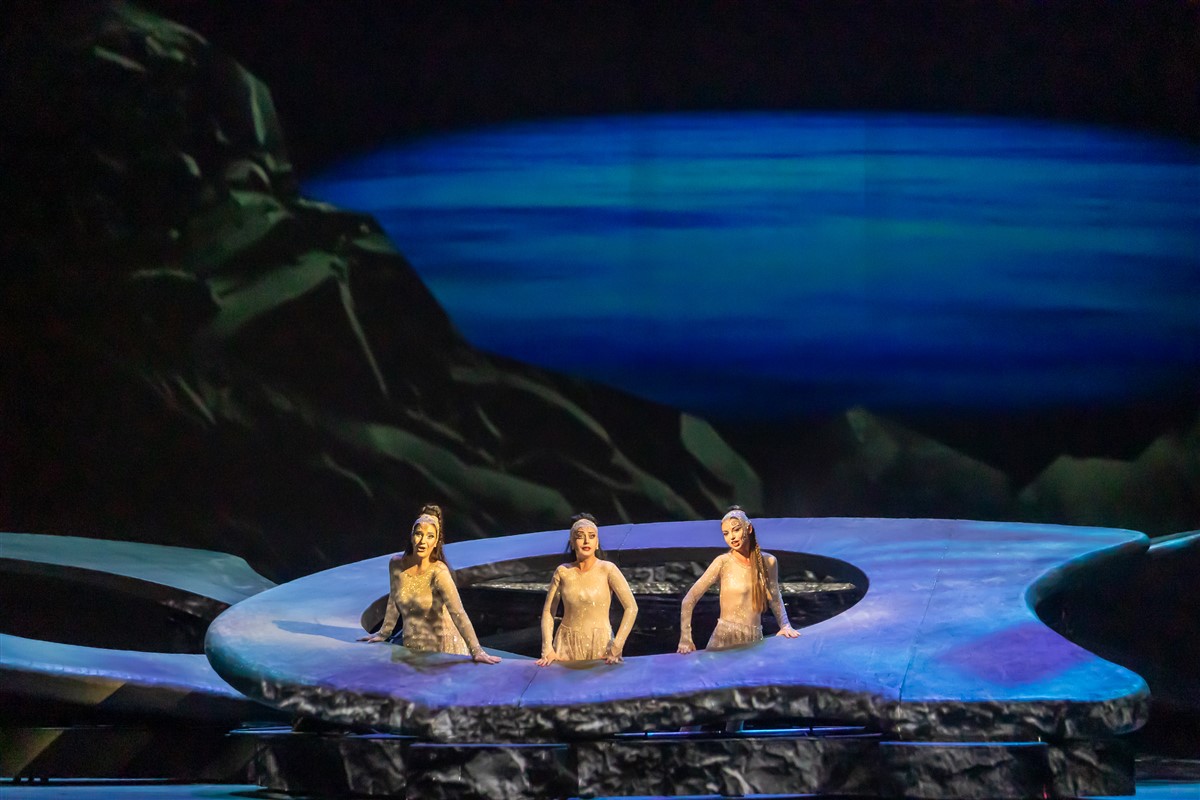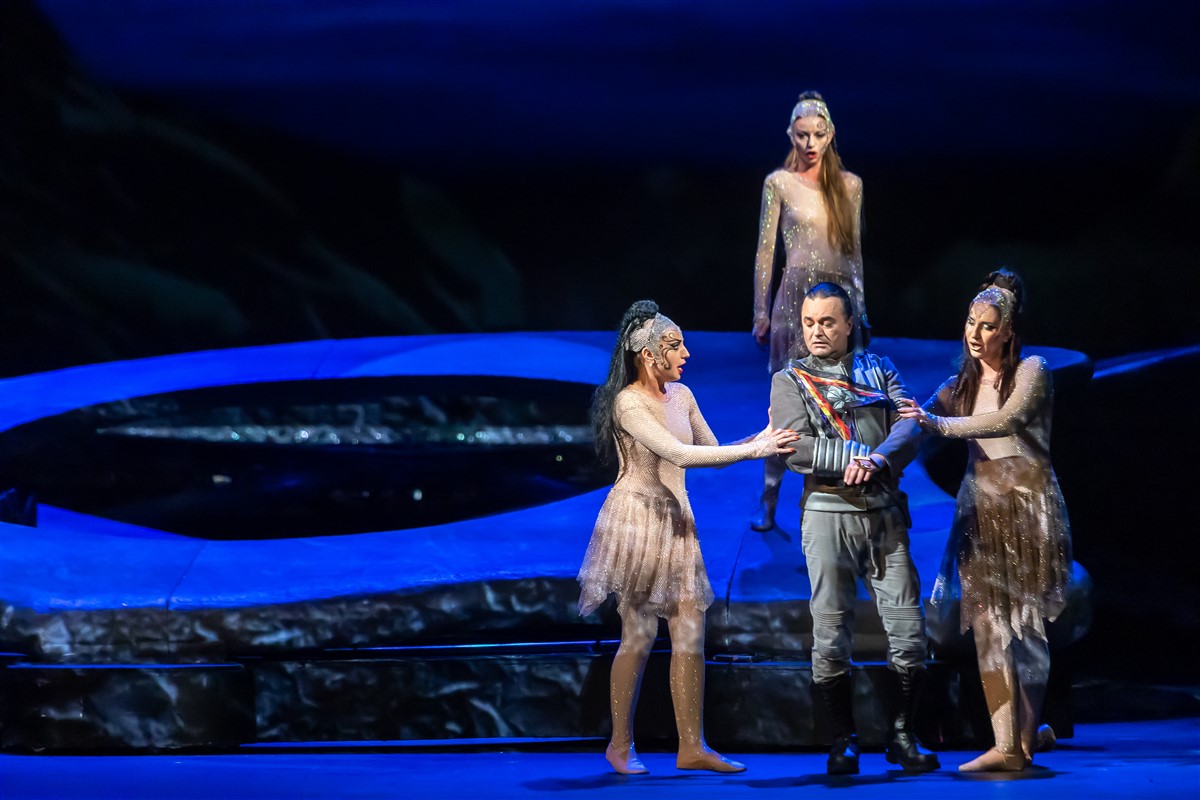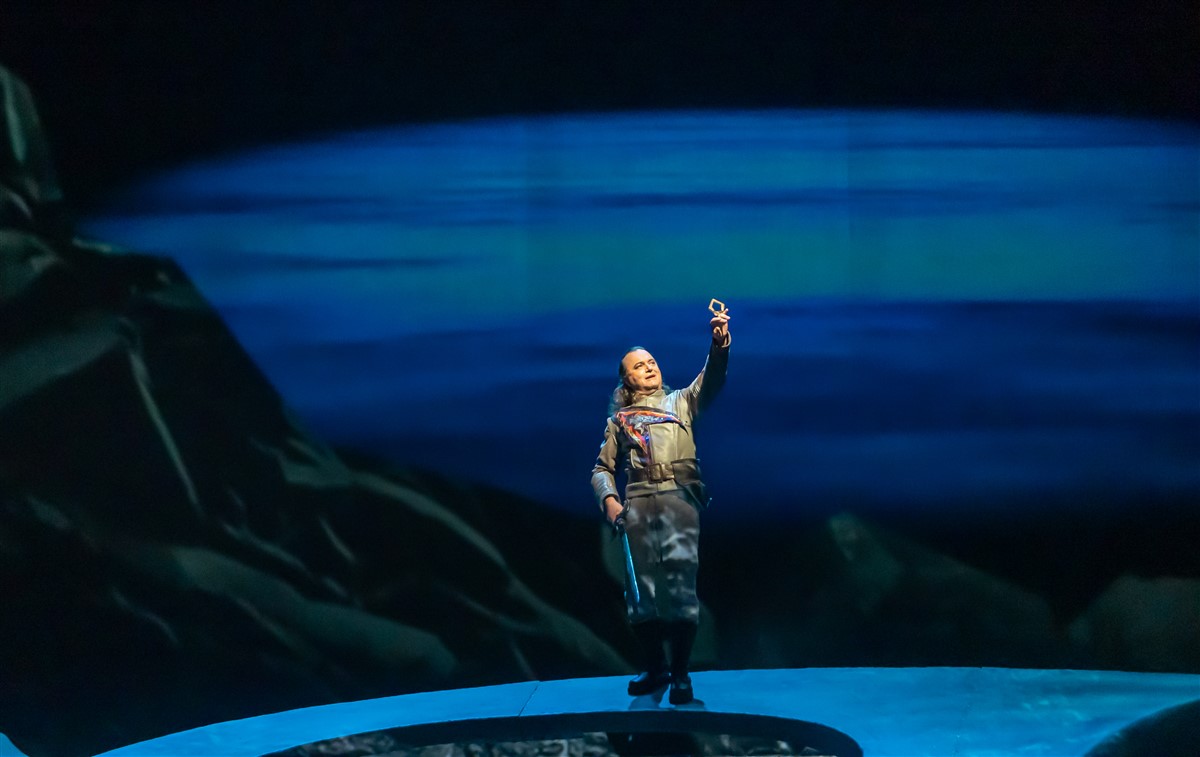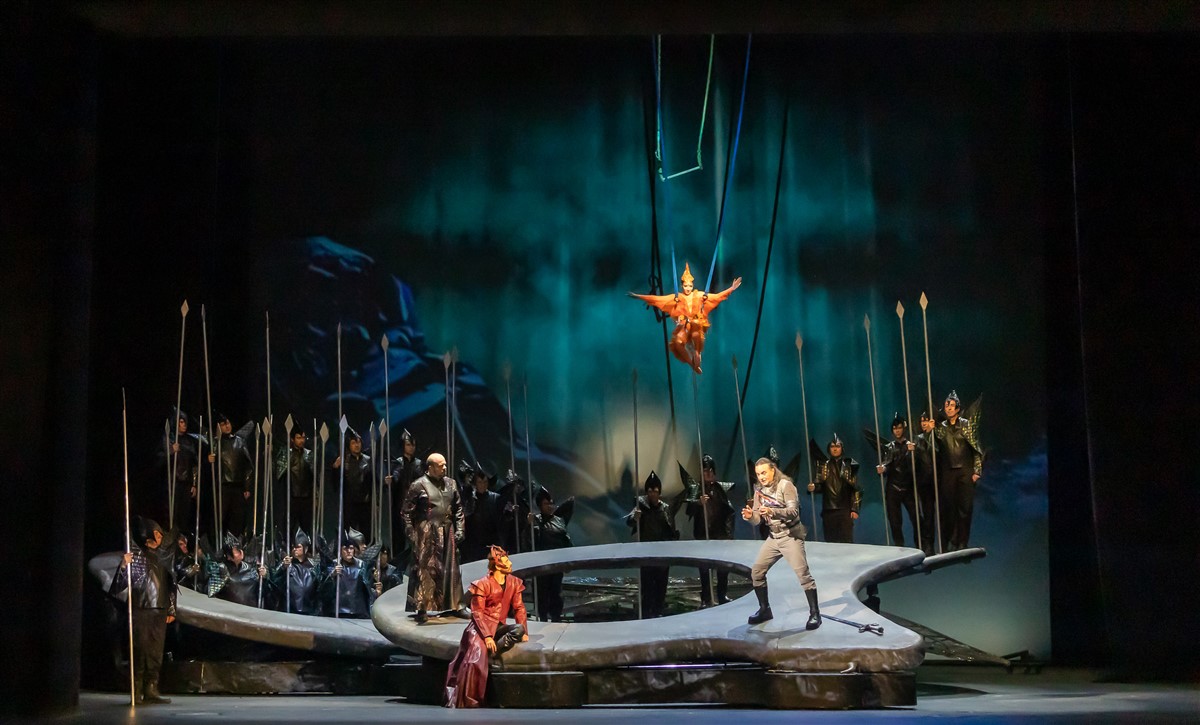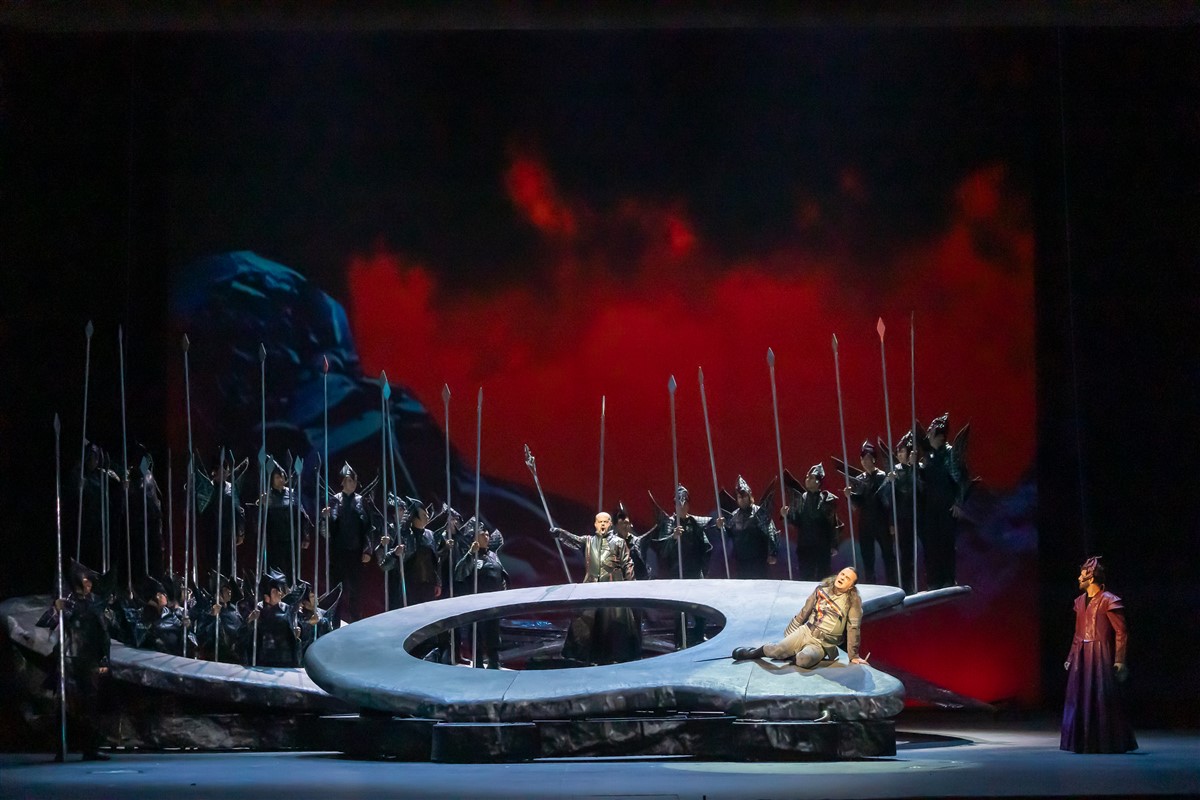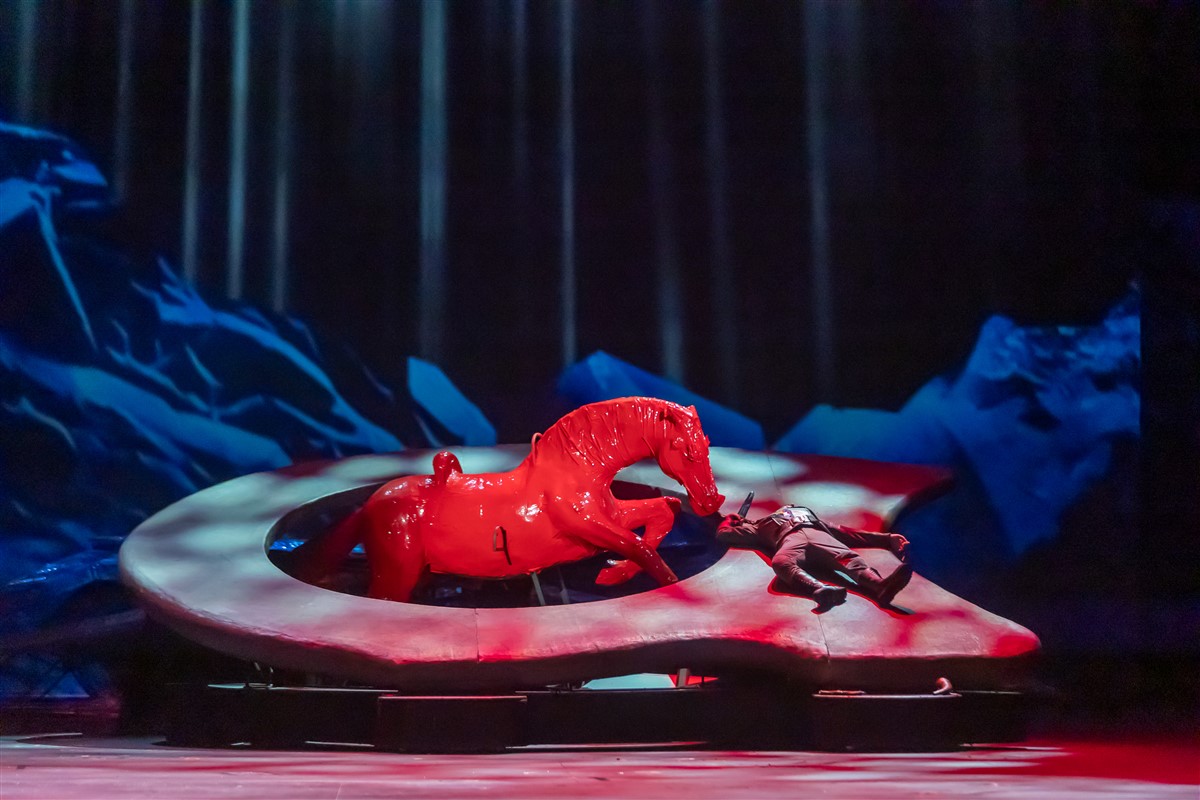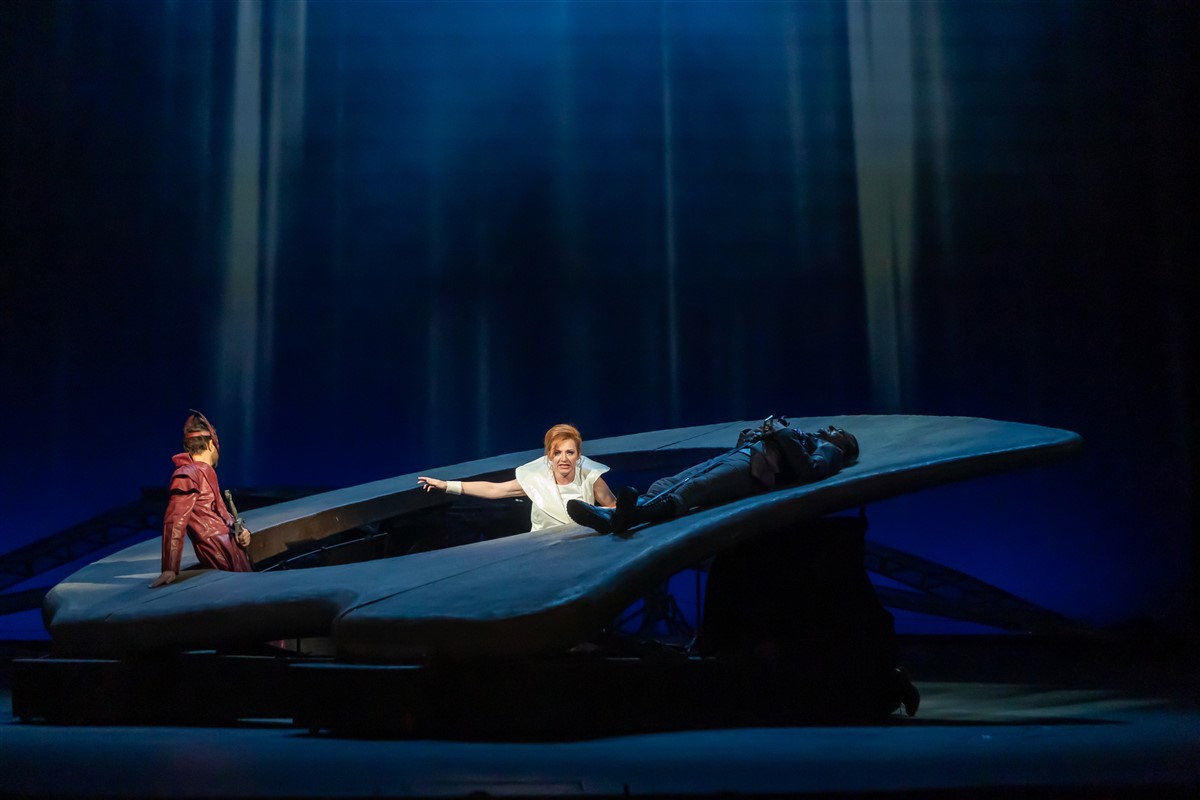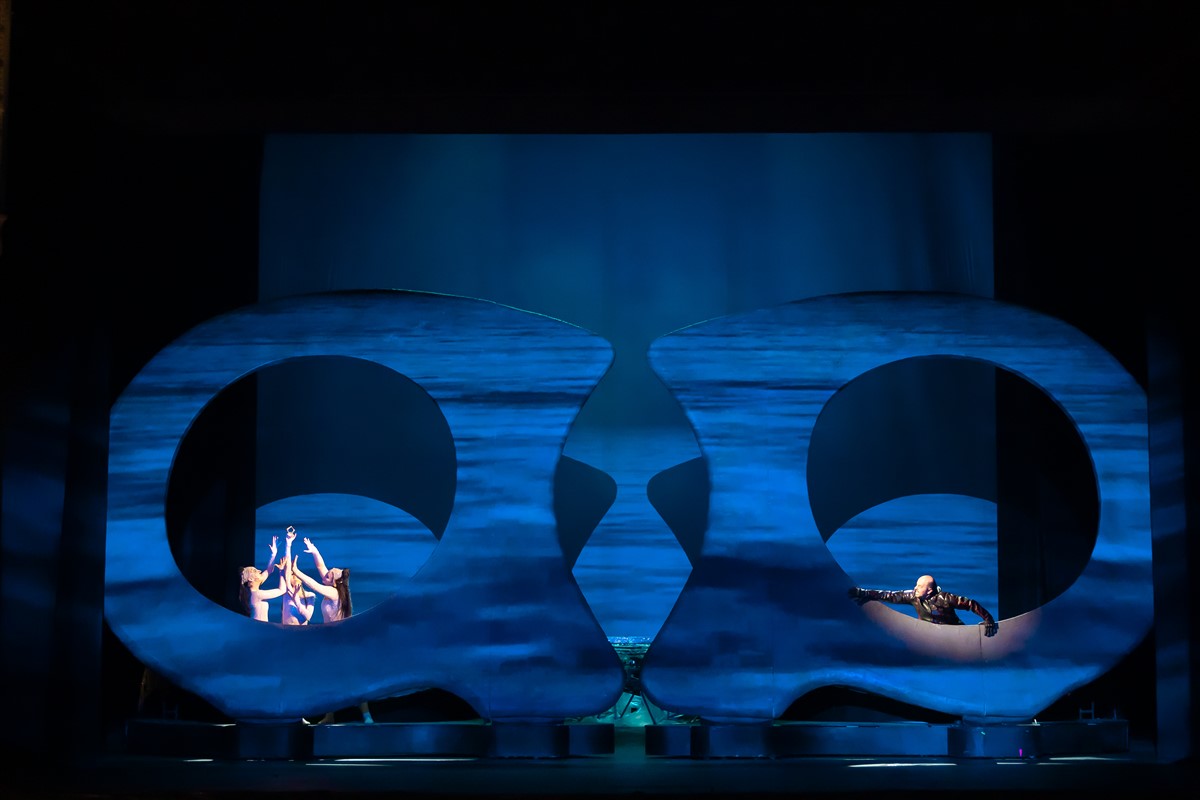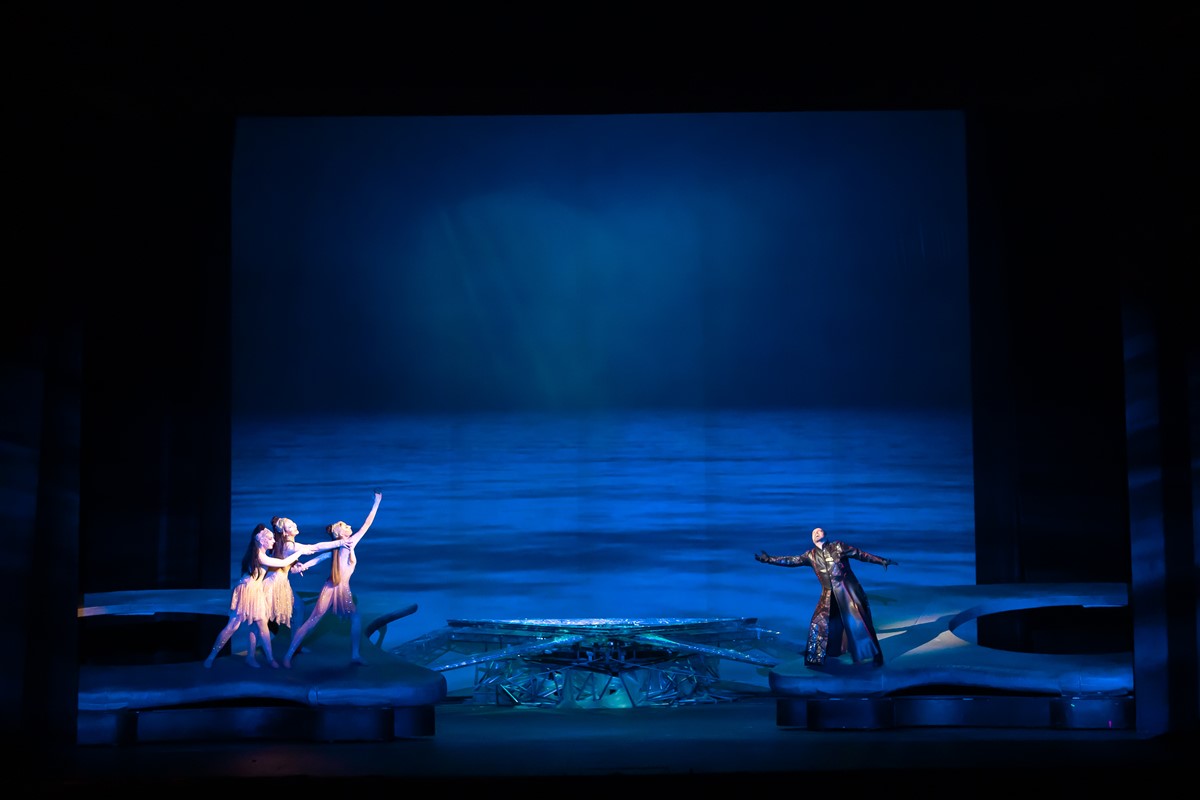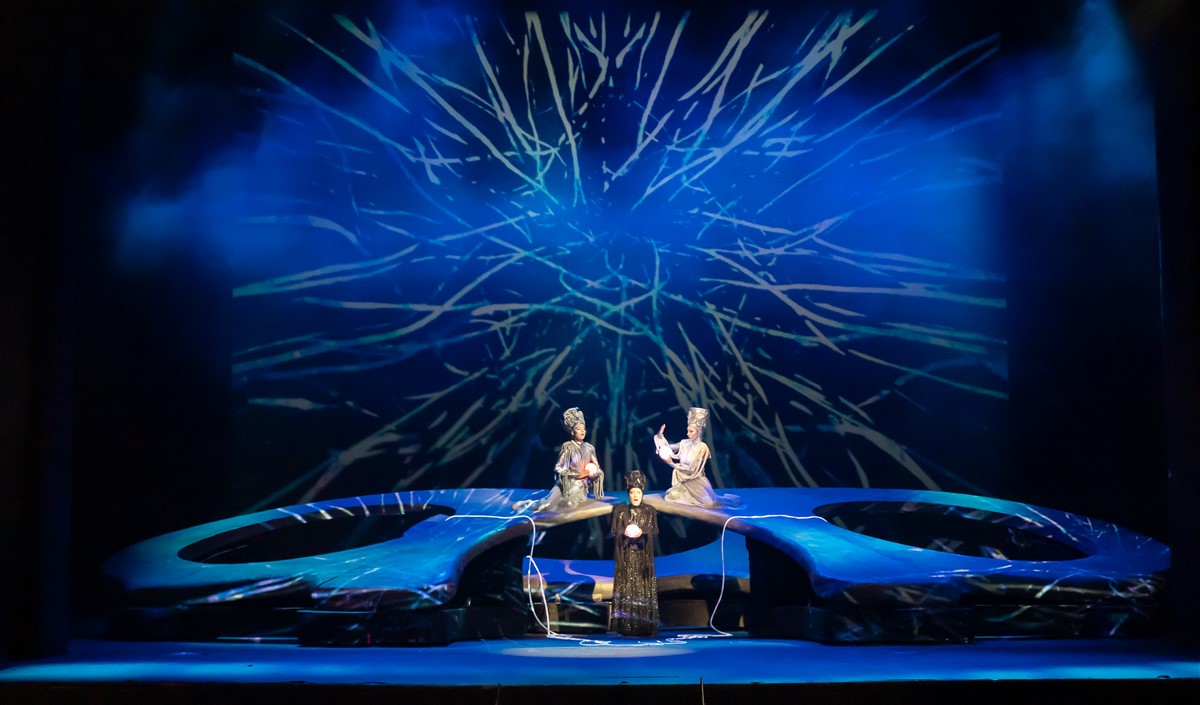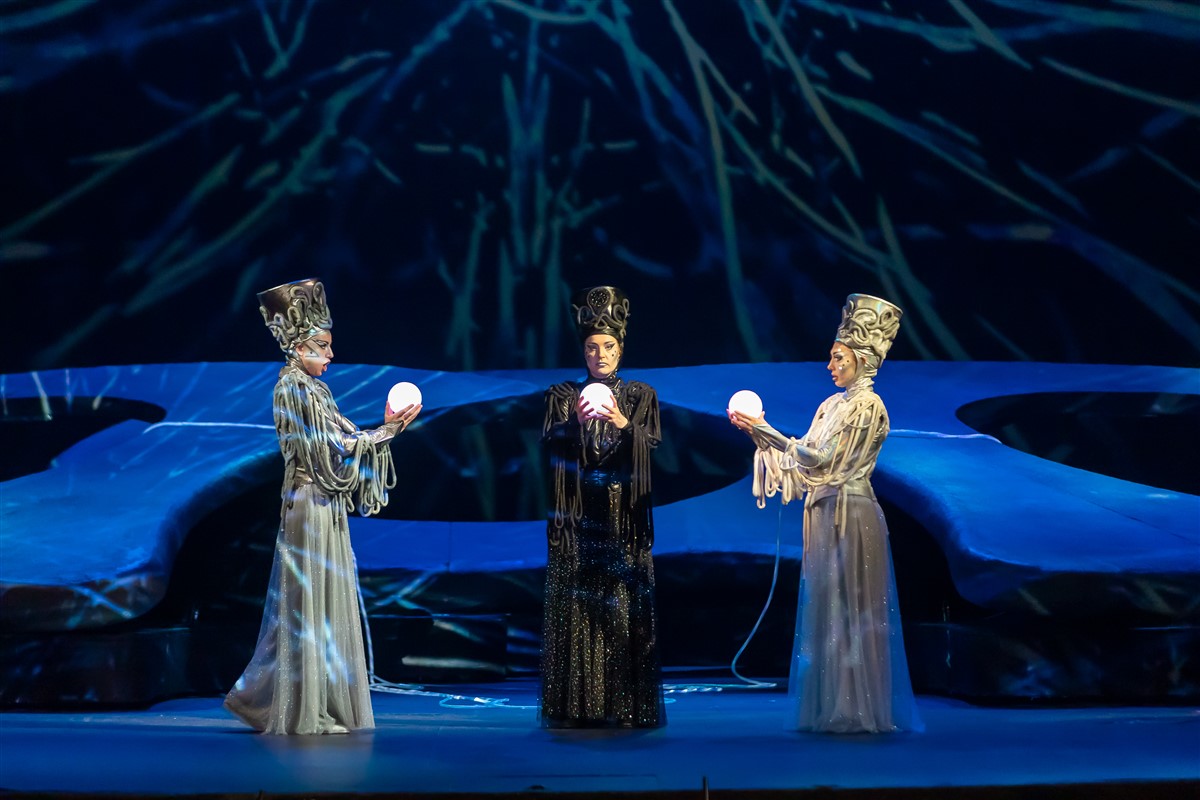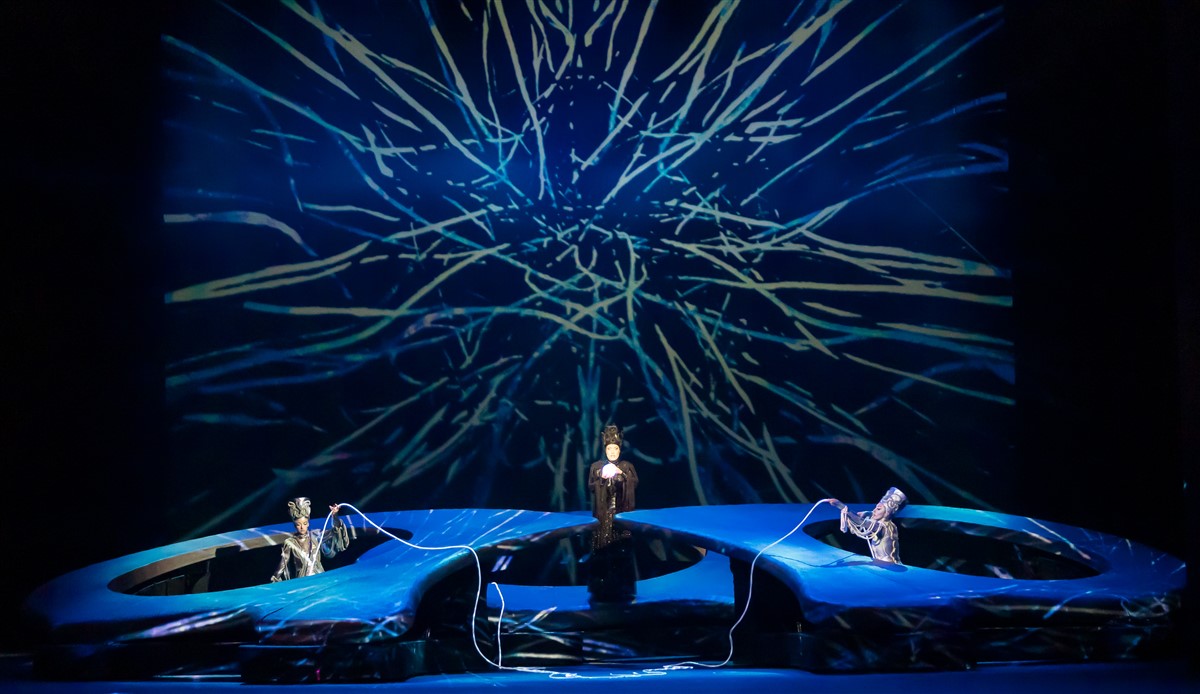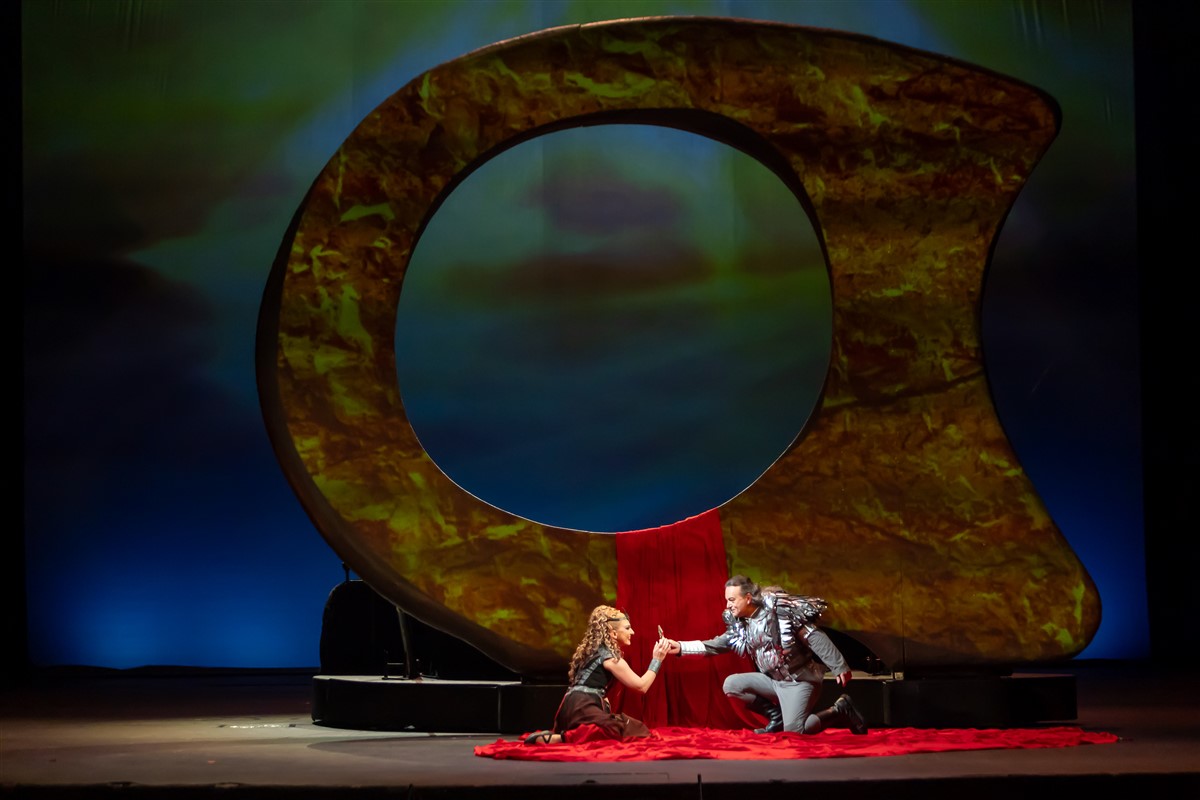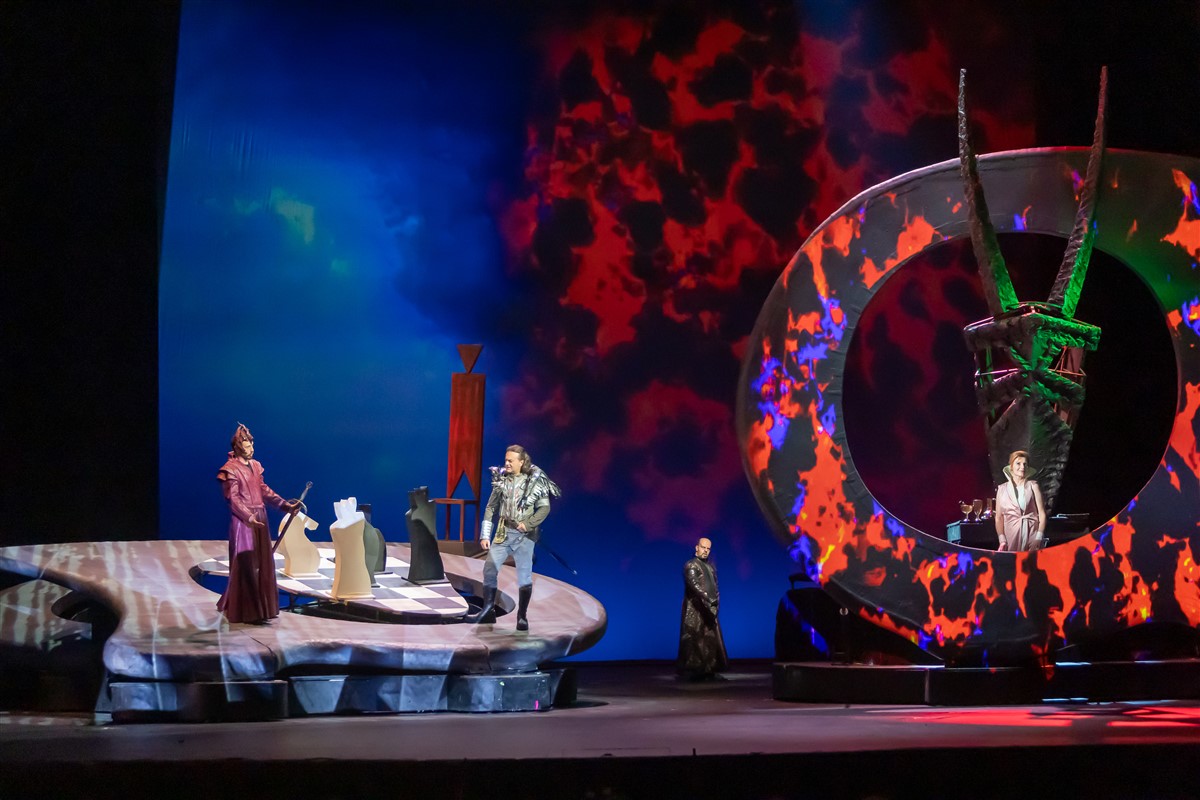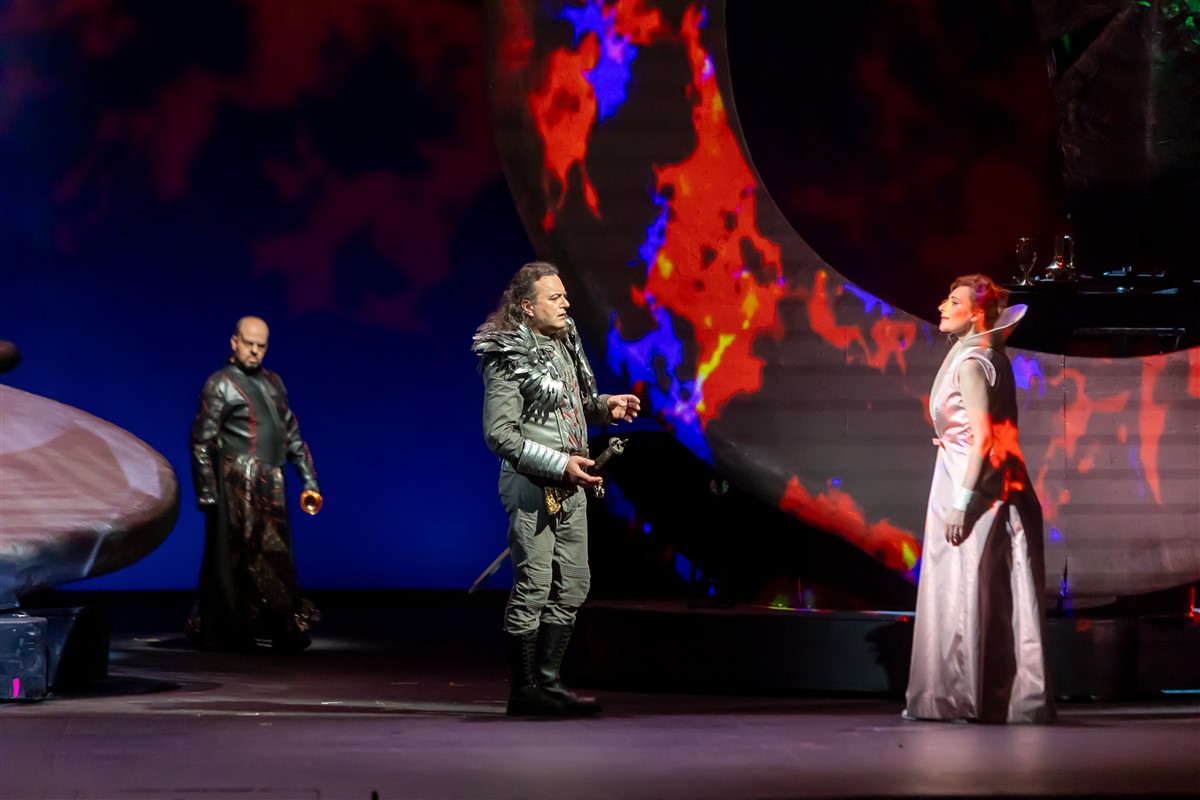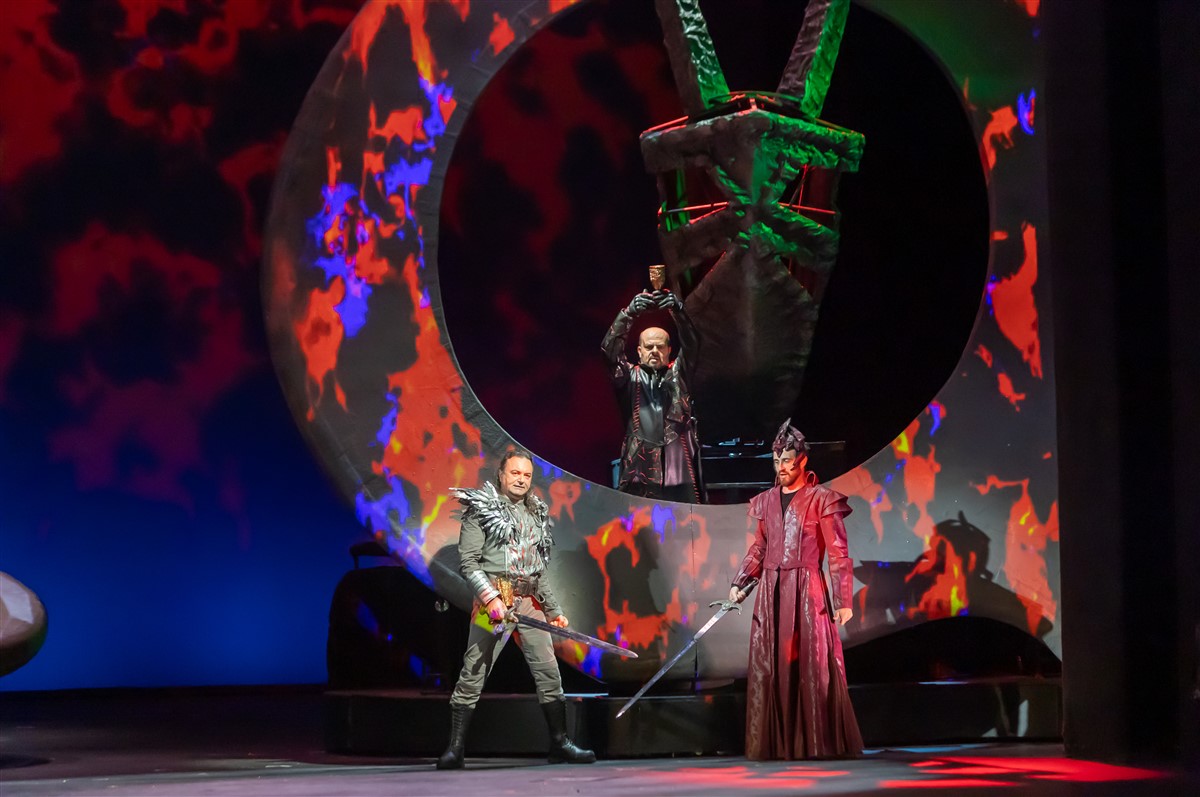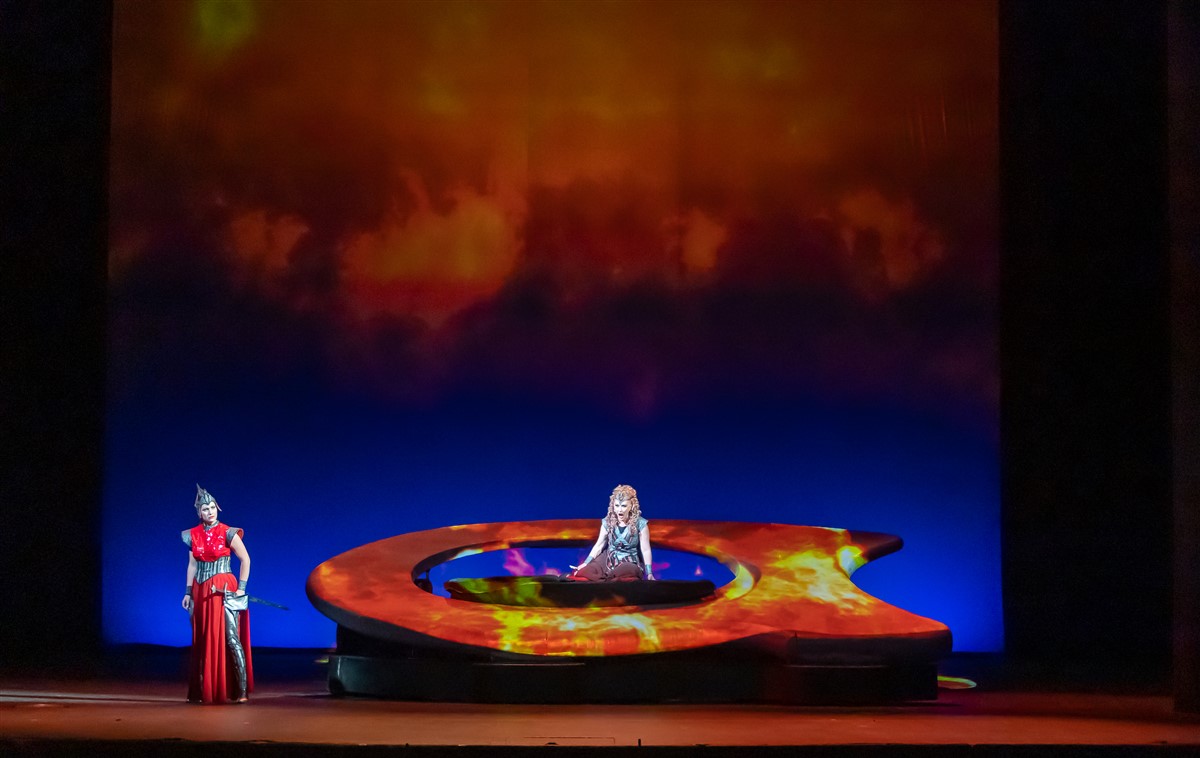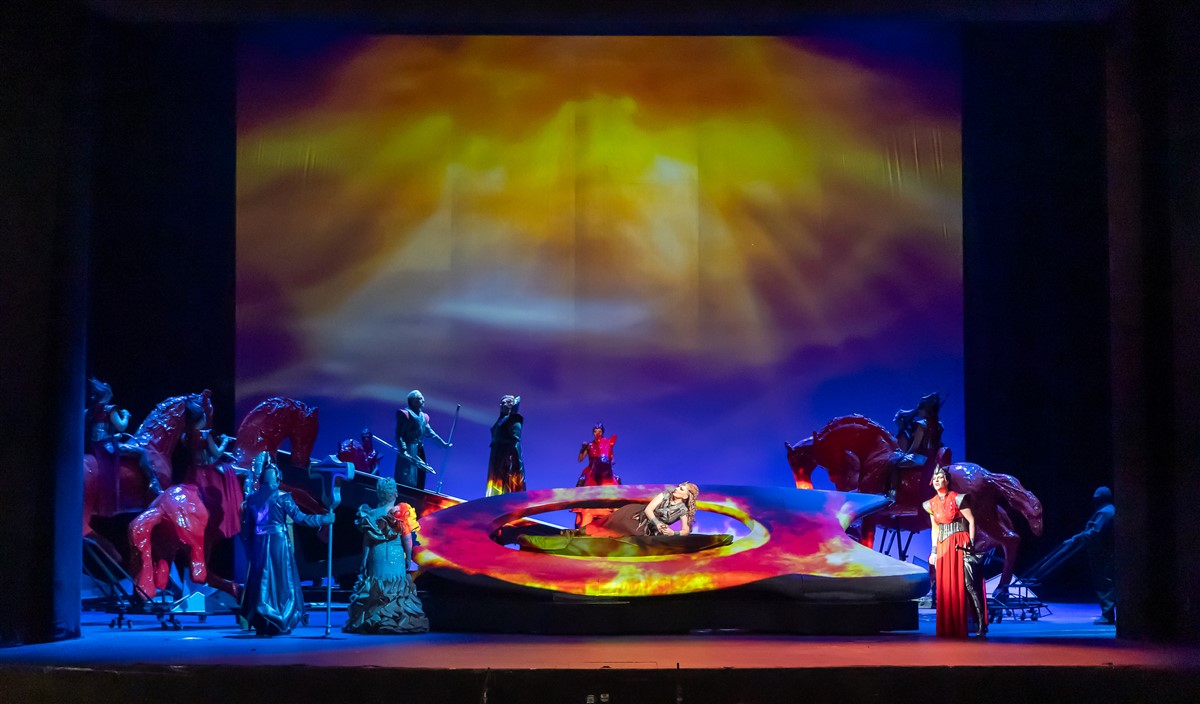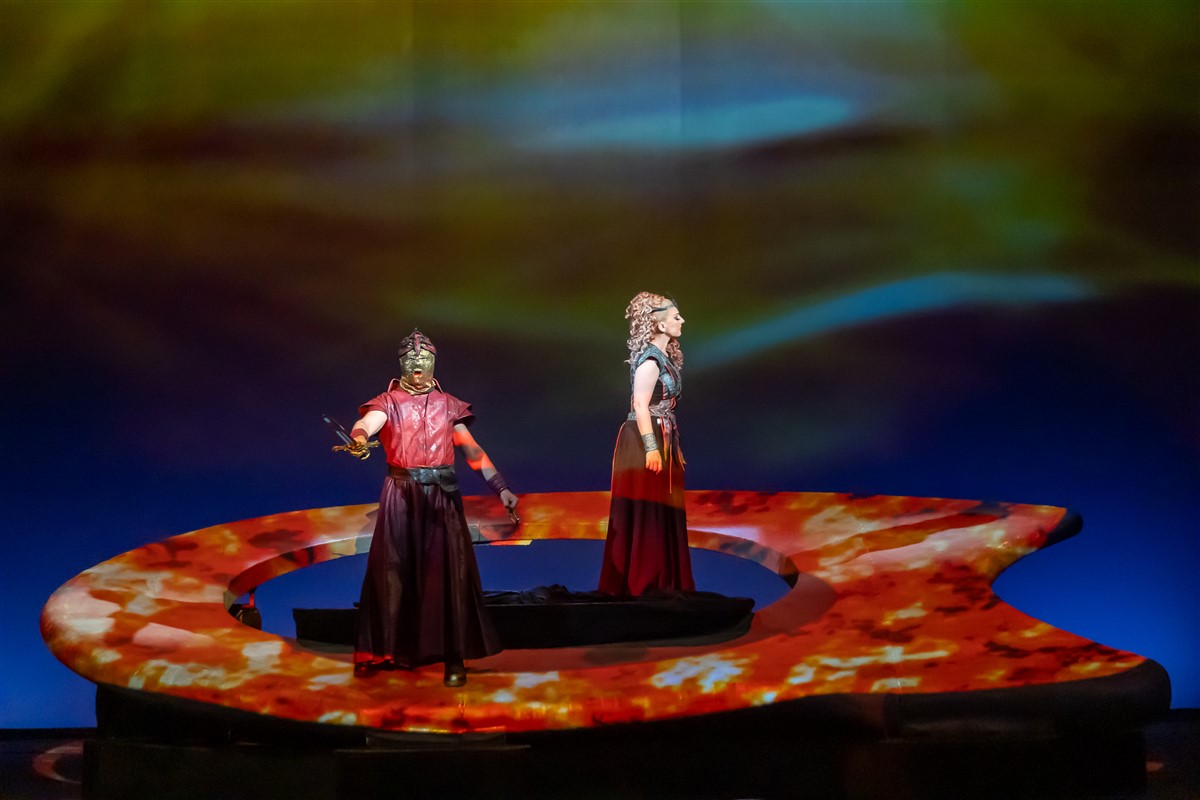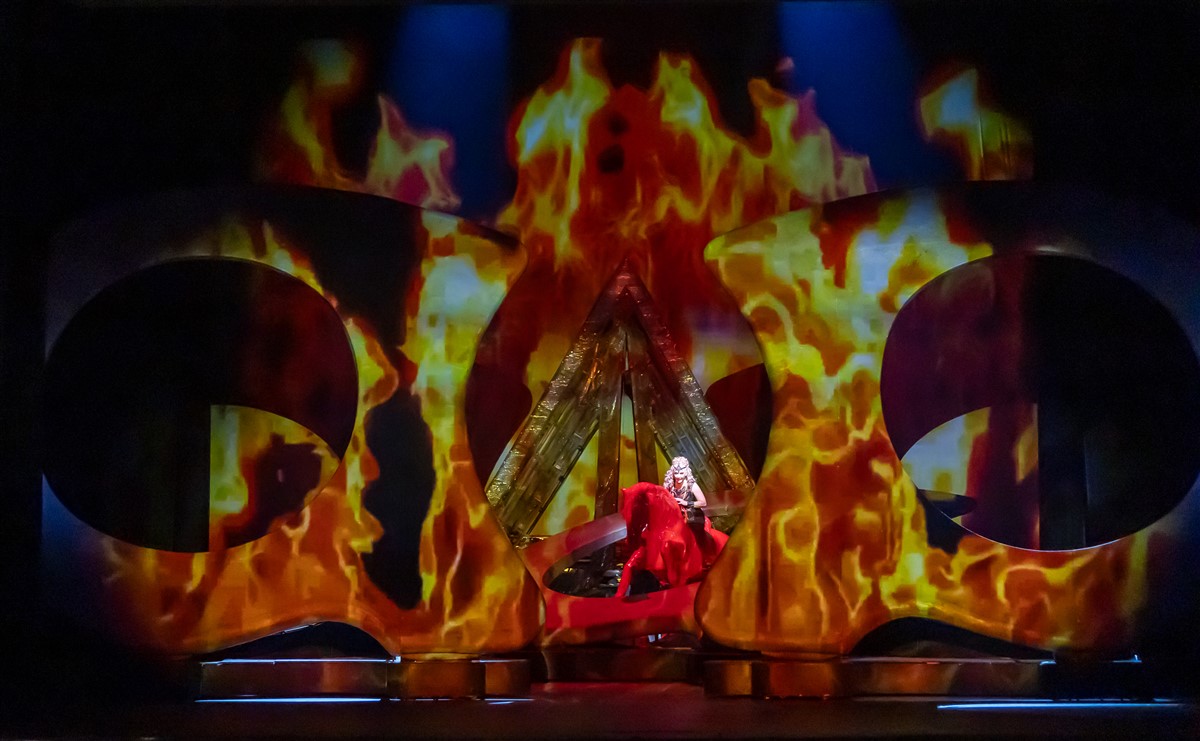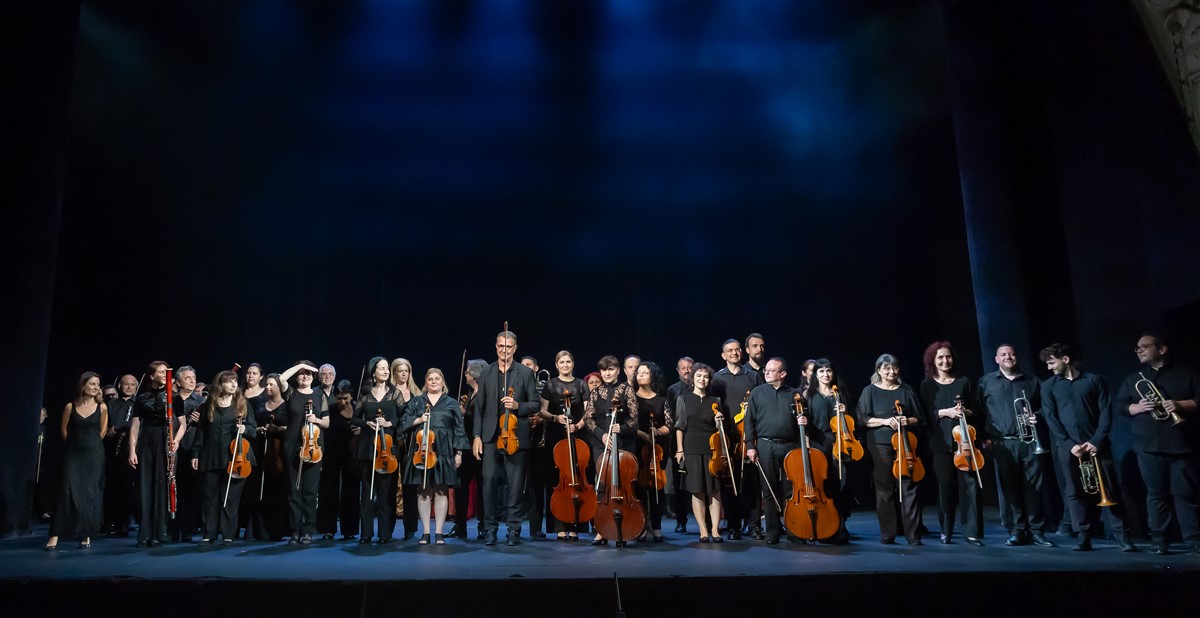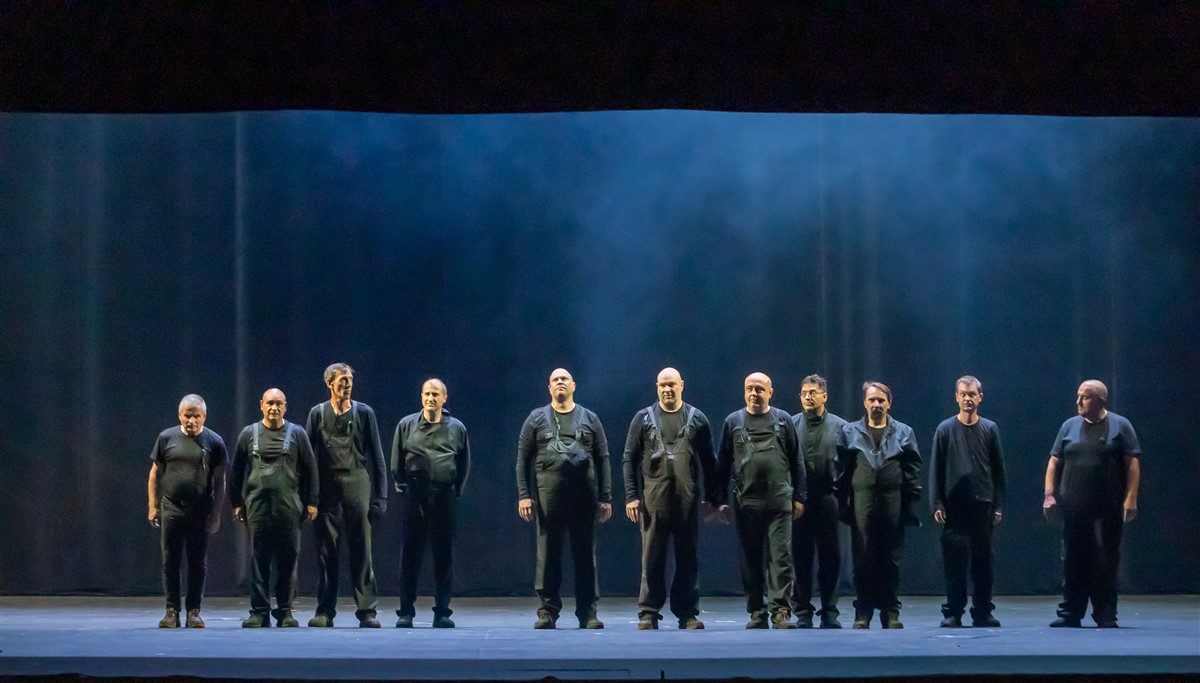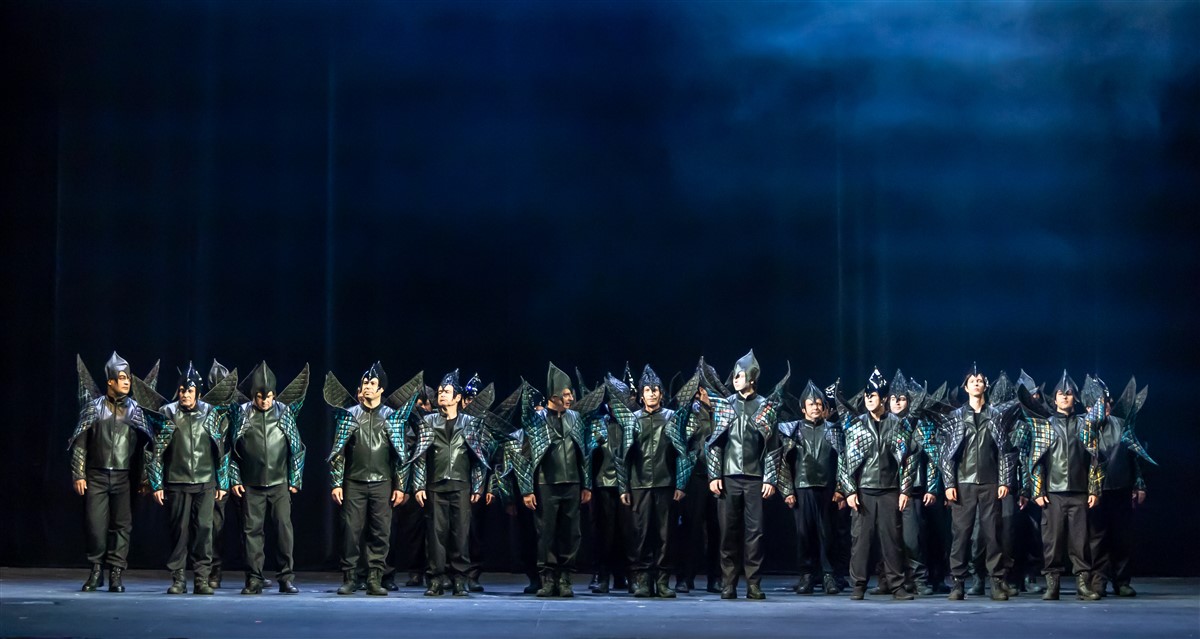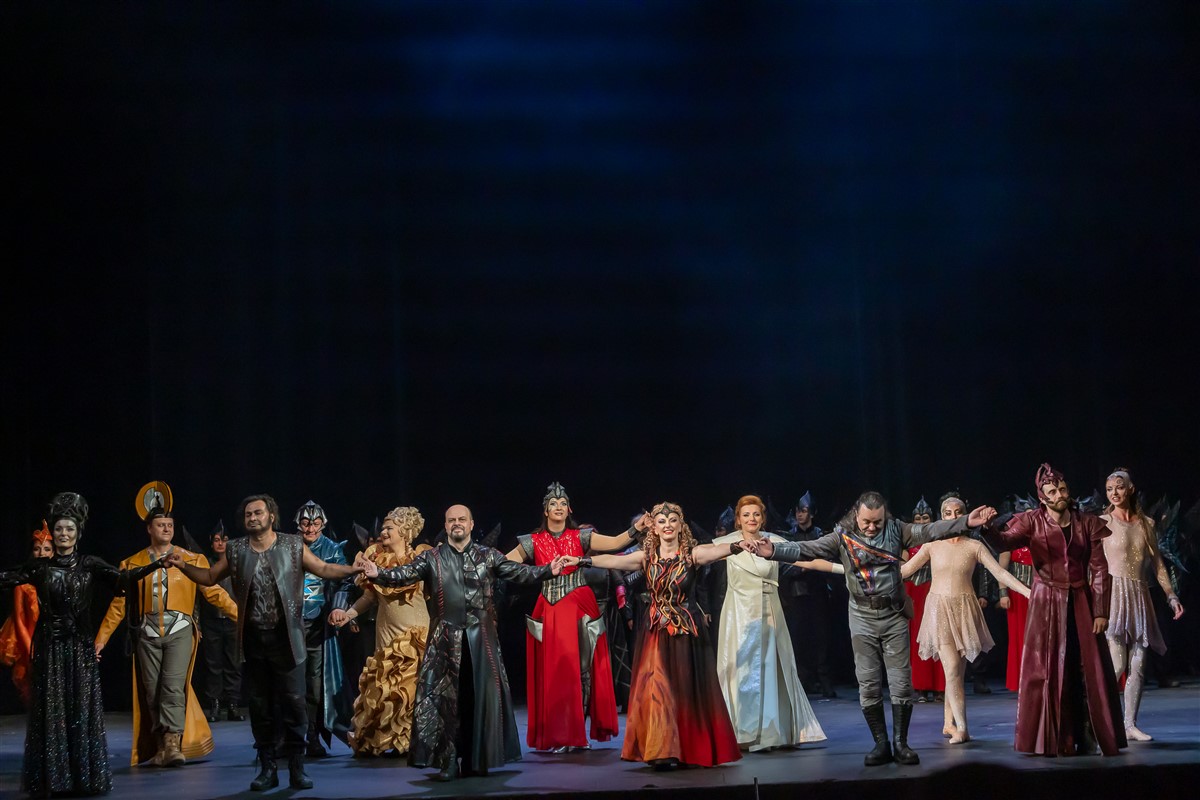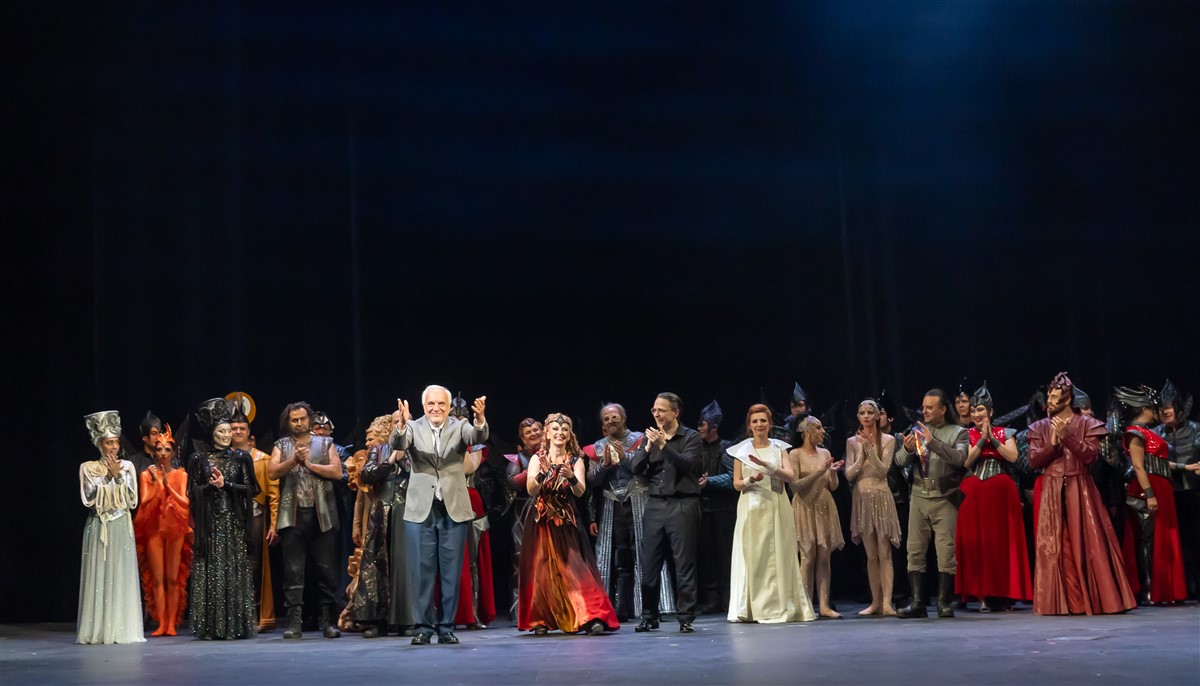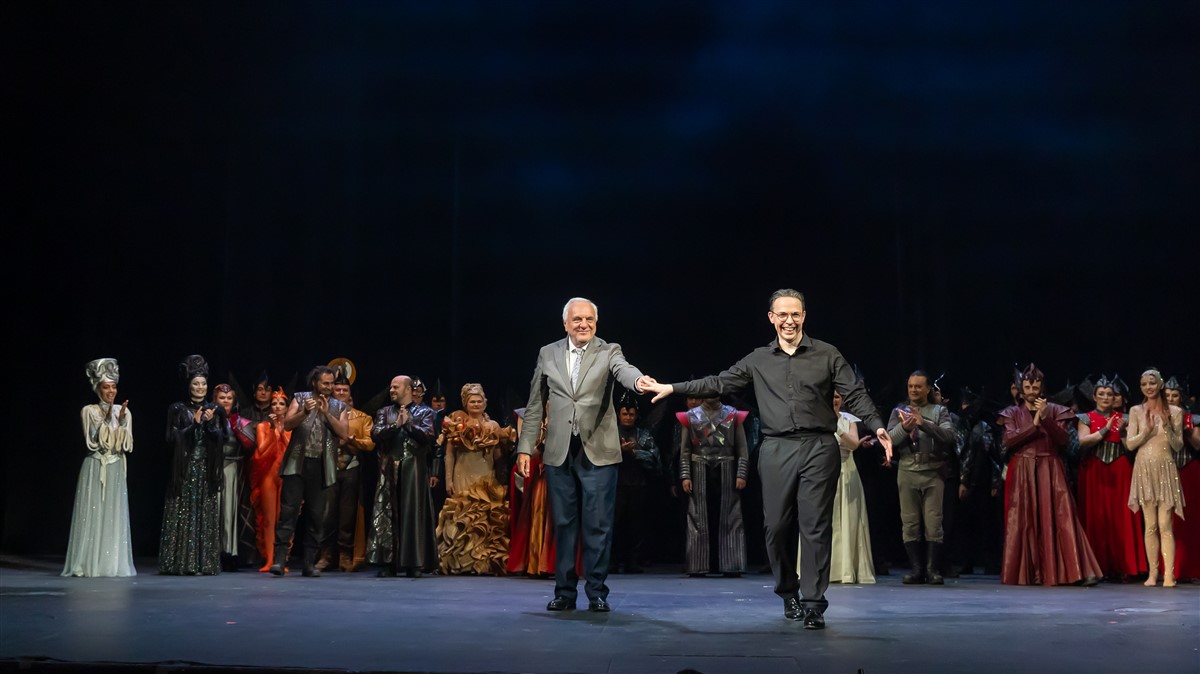A solemn triumph for “Götterdämmerung“
More than ten minutes of glorious applause
The Sofia Opera Wagner Festive drew an audience from all over the world. People arrived to see the Bulgarian productions of Wagner’s operas: the premiere of “Lohengrin” and “Der Ring des Nibelungen”.
Last night, the entire hall was curiously awaiting the fourth and final part of the tetralogy: “Götterdämmerung“, the ending of the story of gods, heroes, Valkyries and the stolen gold. Each following scene of the performance amazed the audience. The structure of Wagner’s dramaturgy was unfolding before the viewer’s very eyes, just like in a movie. The flowing scenes presented beautiful images which in their turn flowed into a seamless breathtaking story.
The impressive beginning portrayed the three Norns weaving the strands of fate, the appearance of the hero Siegfried, the enchanting Brunhilde, the home of the Gibihungs, Gurtrune’s desire of love, Hagen’s plot, Siegfried’s death and Brunhilde’s decision to return the golden ring to the bottom of the river Rhein. The entire story really unfolded like a flawless movie played by an ensemble of artists Wagner could only dream of. The fantastic finale where the Rhein maidens receive the ring back was surreal and was showered in silvery glitter and light. The scene represented the deep waters of the river Rhein.
If „Die Walküre“ is the spectacular flight of the director’s fantasy then “Götterdämmerung“ is Plamen Kartaloff’s indisputable masterpiece. Every single thing in this production holds an infinite beauty which enchants the viewer and brings him unforgettable emotions from start to finish. The story in all four parts of the cycle leads to the culmination where the gods’ castle Valhalla is destroyed in flames. The ray of light which the tetralogy finishes is a symbol of hope for good, beauty, progress and peace. It is hard to describe the magic which unfolded on stage and the excitement in the hall. This performance was a truly profound experience for everyone!
The entire hall burst into applause praising the incredible lead singers who delivered a fiery performance: Martin Iliev (Siegfried), Yordanka Derilova (Brunhilde), Petar Buchkov (Hagen), Atanas Mladenov (Gunter), Tsvetana Bandalovska (Gutrune), Plamen Dimitrov (Alberich), Anna Werle (First Norn), Ina Petrova (Second Norn and the Rhein maiden Welgunde), Lyubov Metodieva (Third Norn), Stanislava Momekova (Rhein maiden Woglinde), and Alexandrina Stoyanova-Andreeva (the Rhein maiden Flosshilde and her debut in the role of the Valkyrie Waltraude).
The Sofia Opera orchestra came up on stage and bowed in front of the audience’s wild ovations while conductor Evan-Alexis Christ was rewarded with a wave of bravos. There was huge applause for Plamen Kartaloff: the creator of this phenomenal performance whose boundless energy and vision create miracles. Here we have to note the huge contribution of assistant director Yuliya Krasteva who was in charge of rehearsals while setting the tetralogy.
Our congratulations go out to the Sofia Opera choir, to all technical workers, assistant directors, makeup artists, cloak room attendants and to everyone else behind the curtains who was a part of this magical experience.
The audience applauded the artists for more than ten minutes straight and seemed like it didn’t want to leave the hall. The artists bowed time after time in front of the exalted audience which continued to applaud them.
Many Wagnerians from Scotland, France, Germany, the Czech Republic, Italy, Portugal, USA, Malaysia, Belgium, Japan and Brazil eagerly watched the four parts of “Der Ring des Nibelungen” and were more than happy to have witnessed such performances, so hard to find in the rest of Europe as they said. During the four nights when the tetralogy was shown, the audience excitedly commented on the productions, the singers, the orchestra and the conductor. There were numerous claims that showing the entire cycle in just one week is a miracle in and of itself.
The general consensus was that these productions were made for the audience so that it can understand Wagner’s philosophy, the history of the cycle and so that it can enjoy the performances effortlessly. The director’s choice of dialogue, the way the characters are developed and the entire stunning vision of the shows made the audience feel like it was a part of an endless journey through the depths of Wagner’s genius. “Götterdämmerung“ was an absolute sensation! A lady in the audience shared the following: “Miracles happen in this opera!”
On Sunday, the 23rd of June, another showing of “Lohengrin” awaits. The international press has already acclaimed the premiere’s enormous success. New guests will arrive from abroad especially for this performance which boasts an incredible international ensemble: Simon O’ Neill, the worldwide opera star from New Zealand in the role of Lohengrin, Islandic bass Bjartni Thor Christinson as Heinrich der Vogler, Austrian baritone Thomas Weinhappel as Friedrich von Telramund as well as the wonderful Bulgarian artists Radostina Nikolaeva as Elsa von Brabant, Gabriela Georgieva as Ortrud and Atanas Mladenov as the king’s messenger. The performance is under the conductorship of Evan-Alexis Christ, with the participation of the Sofia Opera orchestra and choir as well as the Bulgarian National Radio male choir.
This performance is the last chance for everyone who couldn’t make it to the premiere. The Wagner festival will draw to a close with this showing of “Lohengrin”. This festival is the biggest event of this year’s Sofia Opera season and the most grandiose cultural event of the year in Bulgaria; it drew hundreds of guests from abroad and the country became the talking point of the entire opera world.
Below you can see the lead singers and the production team who took part in last night’s showing of “Götterdämmerung“: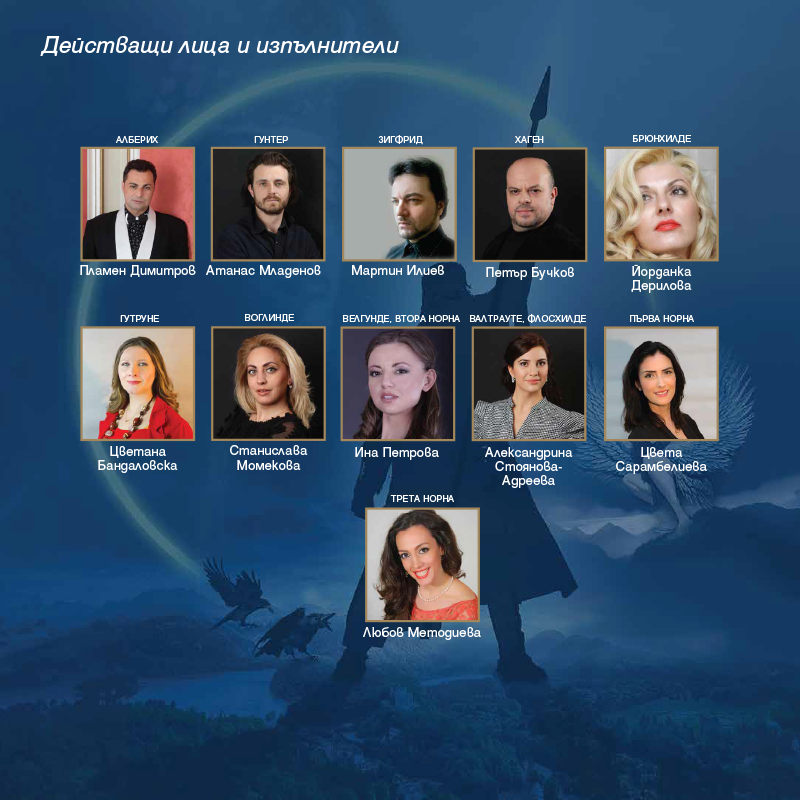
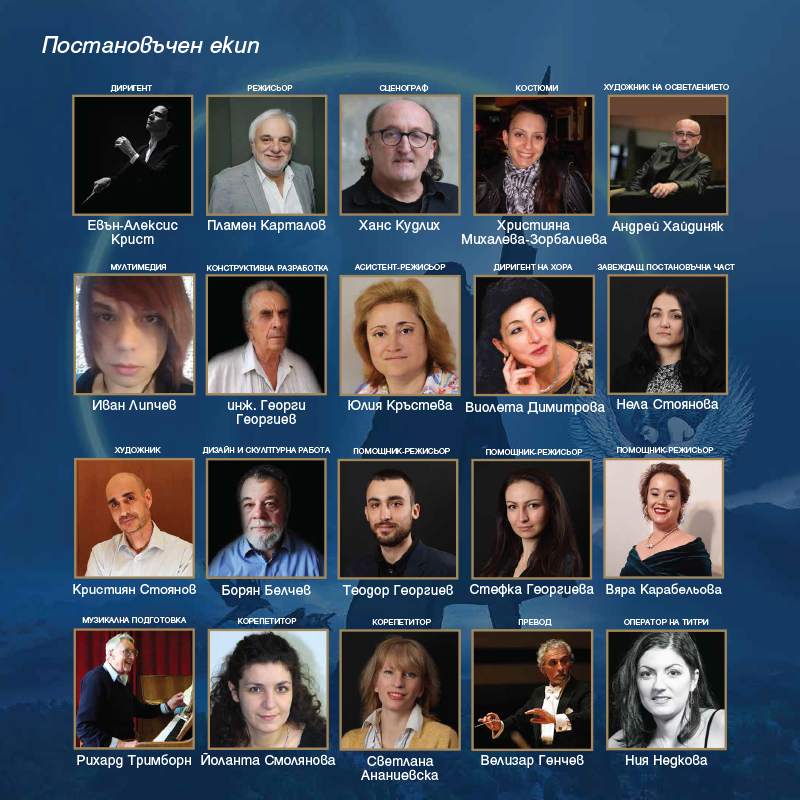
Here are the impressions of our guests after the performance.
Der Ring des Nibelungen
A festive scenic performance to be held within three days and one night
Libretto and music by Richard Wagner
First night: “Das Rheingold”; first day: „Die Walküre“; second day: “Siegfried”; third day: “Götterdämmerung“
“Der Ring des Nibelungen” intertwines complex storylines and ideas. The story of the four-part cycle unfolds on Earth, in the waters of the river Rhein, within the depths of the earth, high in the skies of Valhalla and follows the dealings of men, dwarves and gods. The cycle ends with a catastrophe of cosmic proportions which encompasses the entire Universe.
The musical notions found within the first three operas of “Der Ring des Nibelungen” are most clearly seen in “Götterdämmerung“. This piece contains some of the individual clashes commonly seen throughout the “Ring” but a significant part of the vocal performances differs from the norms established in the previous operas. The first appearance of a true ensemble performance in the tercet at the end of act II and the choir performance marks the transition from the world of the gods to an entirely human perspective.
Perhaps the most stunning orchestra part in the entire “Ring” is the mourning theme after Siegfried’s death in act III; the former is built around a series of leitmotifs all of which are contained in the cycle and portray the hero’s journey.
“Götterdämmerung“ creates unique challenges for the tenor and the soprano who portray the protagonists Siegfried and Brunhilde, with the culmination being Brunhilde’s fifteen minute monologue, one of the longest vocal performances in opera.
Some curious facts!
Richard Wagner was enchanted by folktales and medieval legends. Like many other intellectuals of the 19th century, he also understood these stories contain many truths still valid about contemporary culture and society. He dedicated most of his life to researching these great Scandinavian mythology sagas.
This interest of Wagner as well his curiosity towards the German heroic poem (“Song of the Nibelung”) inspired him to create a first draft of his own version of the Nibelung myth in 1848. His first libretto was called “Siegfried’s death” which would later be used as the basis for “Götterdämmerung“.
Wagner began composing the score in 1850 but soon realized he couldn’t tell the story of Siegfried’s death without telling the tale of his life first. In 1851 he wrote the libretto to “A young Siegfried” which he later shortened to just “Siegfried”. Going in reverse chronological order, he completed the librettos for „Die Walküre“ and “Das Rheingold”. After writing the massive script, he composed the operas in chronological order. The first two were done by 1856. After that, Wagner took a long break in order to write “Tristan und Isolde” and “Die Meistersinger von Nürnberg” before finally completing “Siegfried” in 1871 and “Götterdämmerung“ in 1874: an entire twenty six years after he had begun working on this monumental cycle.
“Der Ring des Nibelungen” is an unsurpassed glorification of the German mythology and heritage. On some occasions Wagner tells the story through the use of leitmotifs: fragments of a melody which convey emotions and themes while repeating themselves in different contexts. In some cases, the orchestra even portrays ideas which remain hidden from the heroes themselves: a method which later found a place in film music.
Wagner required an enormous amount of money for the first production of the “Ring”. He conducted a series of concerts which included excerpts from his epos to be, the most famous being “The Ride of the Valkyries” with which the last act of „Die Walküre“ begins. Wagner’s concerts brought him a lot of earnings and stirred an interest in the operas which he would later show.
The Festspielhaus in Bayreuth: the first and present home of “Der Ring des Nibelungen” was built following the composer’s directions and with the financial aid of Bavarian King Ludwig II. Gottfried Semler was the architect.
“Der Ring des Nibelungen” was first shown from the 13th to the 17th of August 1876. Present were Franz Liszt, Pyotr Ilyich Tchaikovsky, Camille Saint-Saëns and Anton Bruckner.
On the 21st of November 1874 Wagner completed the score of “Götterdämmerung“. On the very last page, he wrote: “I shan’t say anything more!”
You can buy tickets for “Lohengrin”: the grand finale of the Sofia Opera Wagner Festival, here.
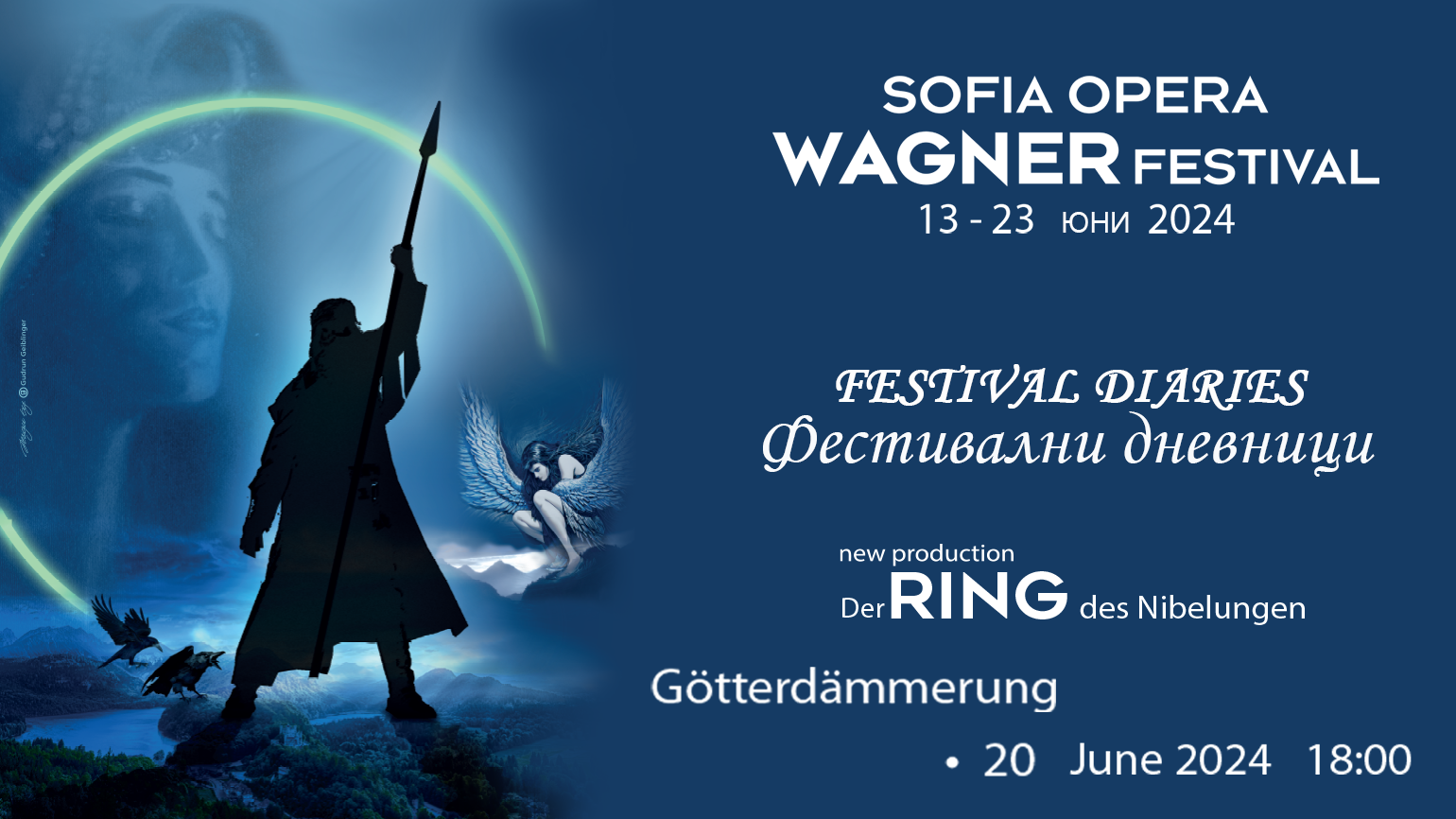
23 Jun 2024Sofia Opera and Ballet
